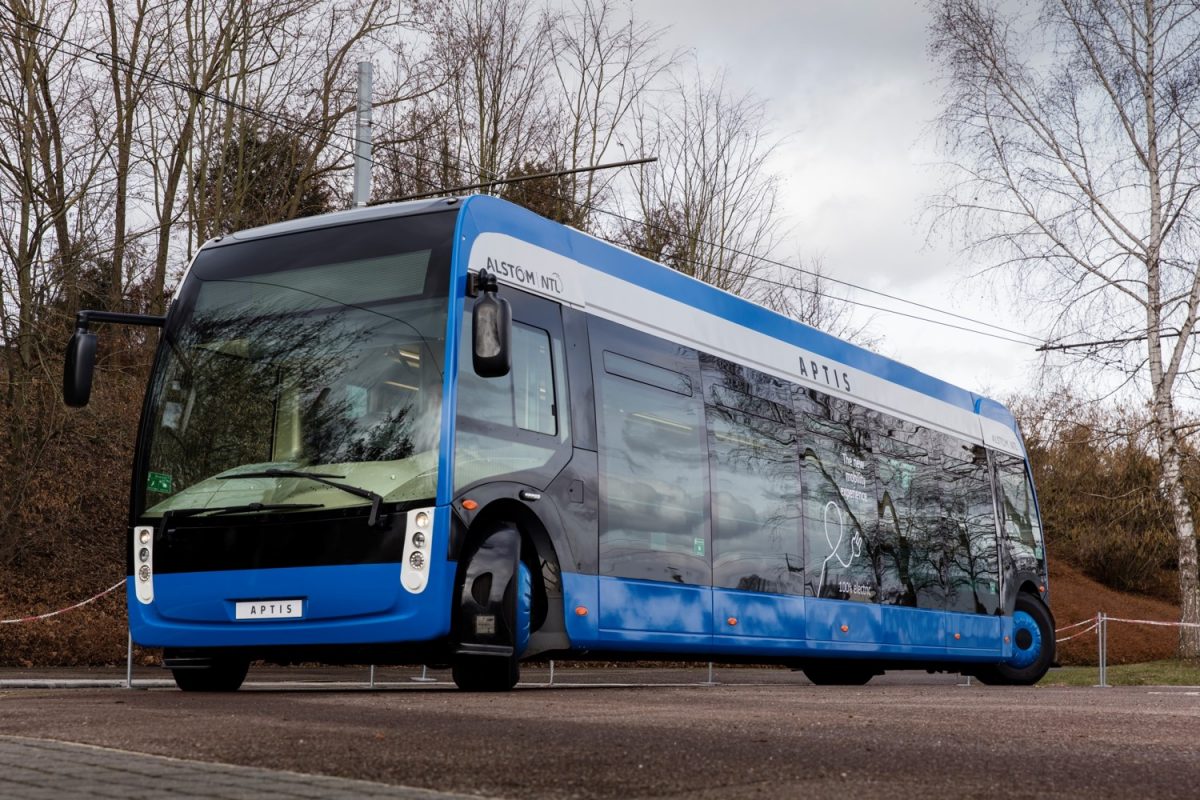French company Alstom and its subsidiary NTL have launched a new type of electric urban transport system called Aptis. This is the first time both companies are diversifying into a non-rail product with an entire range of electric, urban transportation. The new emission-free vehicle development is also in line with national policies in Europe where governments are encouraging the switch from diesel buses to vehicles that use clean energy. With annual global urban transport emissions expected to double to nearly one billion tonnes of CO2 equivalent by 2025, public authorities are more concerned than ever about the environmental impact of transportation.
Inspired by a tram, the design of the Aptis incorporates low-floor accessibility and 360° views. Its panoramic windows at both ends offer 20% more window surfaces than buses. The Aptis has four tyres instead of six for buses. It has four steerable wheels which minimises the space needed to park. The vehicle has an air-cooling system for the motor instead of traditional water-cooling, and all components are located on the roof.
The Aptis can carry up to 95 passengers on board. It features two or three large double doors to enable on-and-off passenger flows and access for wheelchairs and strollers. The vehicle aligns with pavements to allow wheelchair users and passengers with strollers to board easily.
The Aptis can be charged in two different ways. The first mode involves bringing enough energy on board to have sufficient autonomy for a full day of operation, and then recharging the batteries in the depot overnight using a standard plug; it takes around six hours to fully recharge the batteries. The other solution may be either Alstom’s static charging system (SRS) or an inverted pantograph, which takes around five minutes to recharge, equivalent to a quick drivers’ break.
When installed on Aptis, SRS provides the opportunity to charge the vehicle each time it reaches the end of the line instead of just in the depot at night. The SRS has other advantages such as a higher level of service with fewer batteries, leaving more space on the roof to install air conditioning systems, better integration into the existing bus network as there’s no need to install charging systems to charge all the vehicles overnight in the depot and smaller impact on the grid.
Alstom started test runs of the Aptis in Paris in the Ile de France region during the second half of 2017. Other cities in France that intend to acquire electric bus fleets have shown an interest in the vehicle. In Europe, Alstom and NTL intend to target the Netherlands, Belgium, Germany and Spain, markets that are leading the way in electric mobility solutions.



